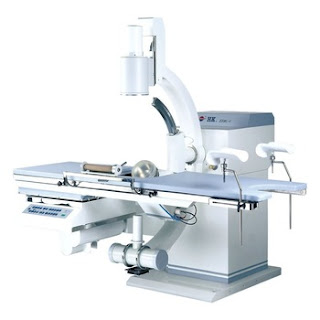Lithotripsy
(ESWL)
Extracorporeal
shock wave lithotripsy for brief, is just a commonly used
non-invasive option to surgery for treating kidney stones.
The
procedure is performed under sedation or anaesthetic on the
lithotripsy bus. It functions by focusing high energy acoustic pulses
that pass through the skin and disintegrate the stones. The sand-like
fragments may then pass out of the body in urine. More info visit about lithotripter machine.
While
a large proportion of stones in the urinary tract may be treated
successfully with lithotripsy, some are resistant to this method and
may demand a repeat or alternative treatment.
Lithotripsy
has the benefit of typically an even faster recovery than
conventional stone surgery.
Before
your Operation
The
operation and outcomes is likely to be explained for your
requirements by your urologist. Once you feel comfortable that you
understand what will be done and have experienced all of your
questions answered, you is likely to be asked to sign a consent form.
This consent form must certanly be signed by both yourself and your
surgeon and forwarded to a medical facility at the very least five
days prior to your admission.
If
you're over 60, or have other medical conditions, you may even need
an electrocardiogram (ECG) to test the health of your heart prior to
surgery.
Operation
day
You
is likely to be required to come to a medical facility approximately
two hours prior to your treatment. This will be confirmed by a
medical facility your day before your admission.
On
arrival you'll be used through pre-admission requirements and shown
to your room.
An
x-ray of one's abdomen might be performed to test the location of the
stone
If
it is time for treatment a nurse will escort you from the ward to the
Lithotripsy bus which is set up outside a medical facility, where
you'll meet with the urologist.
After
prone on the lithotripter machine work,
a drip is inserted in to a vein in your arm. Through this drip the
anaesthetist can give you sedation medicine and treatment during the
therapy depending in your individual requirements.
You
is likely to be positioned so that you are in the best place for
treatment. A rubber pad covered with a special gel is put against the
skin. Using ultrasound or x-ray guidance, the shock waves are
dedicated to the stone and treatment will begin.
The
treatment normally lasts between 1 to 1.5 hours. At the end of the
treatment you will be transferred to a wheelchair and taken to the
ward for recovery.
Recovery
You
will go to day surgery area after the procedure. Once able, you is
likely to be encouraged to drink lots of fluid to help flushing out
the stone fragments.
It's
common to have a little nausea immediately following the therapy but
this is usually resolved by the time of discharge.
After
an amount of observation you is likely to be discharged home. Some
cases may require an overnight stay. Usually work and other normal
activities might be resumed the next day should you feel able. You
are able to discuss this along with your urologist.
After
discharge
You
could eat and drink normally following this treatment and it is
important to steadfastly keep up a great fluid intake.
Stone
fragments will pass out of the body to the urine. Occasionally this
will cause discomfort and pain while they travel out. You is likely
to be given a prescription for treatment in case this happens.
You
will receive a follow-up appointment to see your specialist at six
weeks to go over the outcome of one's treatment. Prior to this you
could have an x-ray to test the stone has passed.

Comments
Post a Comment